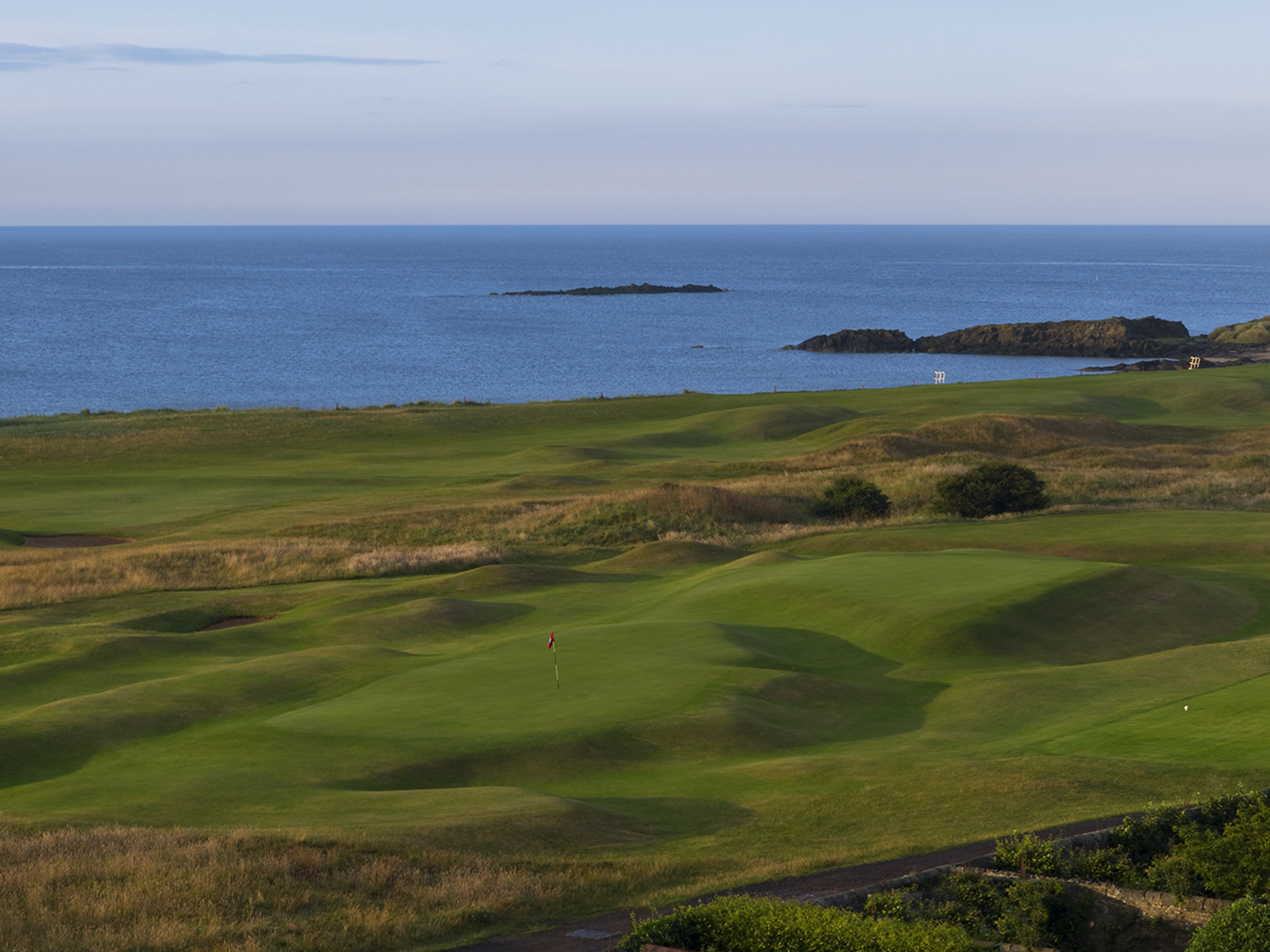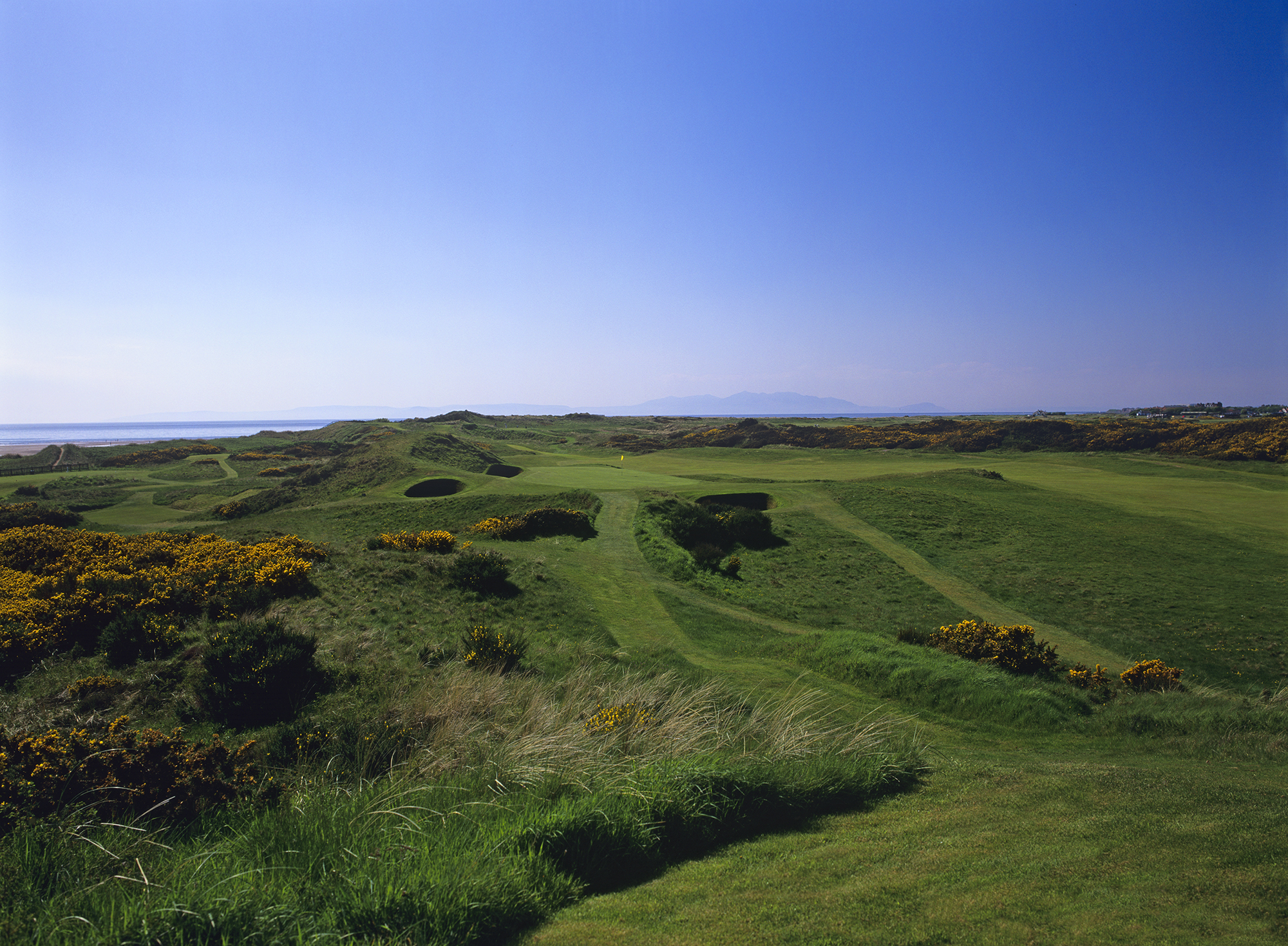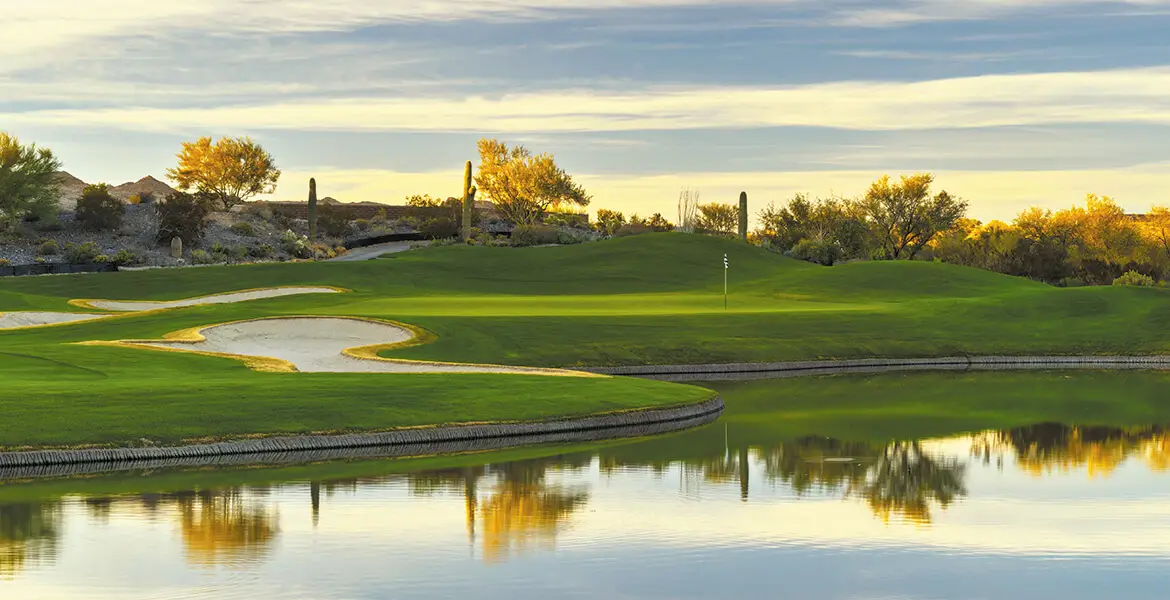This series of Mount Rushmore pieces has been fun to research, write, and (hopefully) read. I’ve gone into each article (course architects, golf writers, seaside courses, mountain courses) knowing there’d be those who’d shrug their shoulders and concede, “Yeah, fair enough,” and an equal number of readers, if not many more, who’d wince, shake their head, and think, “You’re joking, right?” And I realize this one might be something of a fool’s errand and arouse the biggest difference of opinion yet.
There are, after all, something like half a million greens in the world and, though there are dozens of replicas or greens modeled on others, every single one of them is somehow unique—even those at The Lido in Wisconsin, whose characteristics Tom Doak recreated in terrific detail.
As with all the previous stories, a good deal of thought went into the selection of the “Mount Rushmore of Greens,” with numerous criteria affecting the final decision.
I didn’t want the green’s setting to influence the decision. This wasn’t about eye candy. If it was, the choice would have been simpler: 16th at Cypress Point; 4th at Banff Springs; 7th at Pebble Beach; and 2nd at Lofoten Links, with honorable mentions for the 12th at Augusta National; 3b on the Pacifico Course at Punta Mita; 14th at Hokuala, and 9th at Turnberry. Thing is, if you take Pebble Beach’s 7th hole, for instance, the green itself isn’t terribly remarkable. Though it’s certainly one of the most thrilling holes in the world to play, if you were to take the green out and put it on a less spectacular course, it wouldn’t spark much of a conversation.
Rather, I based the choices almost entirely on the green. It needed to be noteworthy, instantly recognizable, and inspire the sort of putts you look forward to hitting. That last bit is very important, because there are a lot of instantly recognizable greens that are noteworthy for all the wrong reasons and which you don’t particularly look forward to putting on. So, they aren’t necessarily the four greens with the craziest contours and breaks. Sometimes that works and can be fun; sometimes it’s over the top and gets frustrating, especially if the green’s too fast. Essentially, I wanted four intriguing greens you’d happily visit again and again, and which might grace any hole. That said, a lot of great greens are only great in the context of the whole hole. They work beautifully where they are but might not elsewhere.
I could quite easily have picked four greens from The Old Course at St. Andrews—5th/13th, 7th/11th, 17th, 18th—but that wouldn’t be fair to the rest of the world, and I chose two different greens in Scotland.
Here, then, are the four greens that met my byzantine metrics the best—greens whose design, originality, and place in the game I think justify their place on the mountain.
North Berwick (West), 16th hole—North Berwick, Scotland

It is thought the second/back/east of the two plateaux on this green was built in 1895 by greenkeeper Tom Anderson after being instructed by George Dalziel, Tantallon Golf Club’s Greens Committee Chairman (Tantallon is one of the three clubs that play over the West Links—the others being North Berwick and Bass Rock) to, “Make new putting green on table, east of present Gate hole putting green.”
Probably done to relieve a drainage problem with the original green/table, it created what is perhaps the most fun green on which to putt, and the most pleasantly confusing to approach and chip to, in the game. In total, the green is 55–60 yards long, and about 11 paces across at its widest point, with a three- to four-foot-deep gully running between the two distinct sections.
Some think of it as a Biarritz green (one of C.B. Macdonald’s famous templates) while others say it doesn’t fit the mold as the swale isn’t perpendicular to the line of play and there aren’t any flanking bunkers, making it a Double Plateau but not a Biarritz. Whatever you prefer to call it, finding the bottom of the cup can be quite an adventure.
Royal Troon (Old), 8th hole—Troon, Scotland

Royal Troon’s par-three 8th hole was built in 1909 and originally called “Ailsa” but later renamed “The Postage Stamp.” At first, members used the huge sand dune behind and to the left of the tiny green as a backboard, hitting their tee shots into the bank and hoping their ball would fall back down the slope toward the hole. To prevent this from happening at the 1923 Open Championship, James Braid dug two bunkers into the sandhill. One has since been filled in, the other, “Coffin,” is still very much in play.
The green is less than 3,000 square feet in size and, even with a wedge or sand wedge, can be hard to find.
Augusta National, 14th hole—Augusta, Ga.
Not many readers will ever get the chance to putt on this turbulent, turf-covered roller-coaster, but we can’t wait to see how the game’s best fare on it every April. It comes at the end of what is probably the second nine’s least eventful hole but, of course, uneventful at Augusta National can be sensational and extraordinary anywhere else. At Masters speeds, the green’s significant rolls and left-to-right slope demand the absolute deftest touch and, while tournament regulars certainly have the advantage of encountering its eccentricities often, first-timers might easily turn a green-in-regulation into a double bogey or worse.
Pasatiempo, 16th hole—Santa Cruz, Calif.
View this post on Instagram
A post shared by EVAN SCHILLER Golf Photography (@evan_schiller_photography)
As with all the greens here, you walk on to Pasatiempo’s 16th and just pause for a moment so you can take it all in. Thanks to photographs taken at the time the course opened, we can tell it now resembles what Alister MacKenzie built in 1929 very closely. That’s thanks to Jim Urbina’s incredible restoration work completed in early 2025.
The blind but entertaining drive and striking front-right bunker certainly play their part in what was MacKenzie’s favorite two-shot hole, but it was surely the incredible three-tiered, back-to-front sloping green that excited him the most. Both green-separating slopes are substantial, but the rise up the first of them is by far the steeper, so any putt from the lowest tier will need to be hit with some authority. “The lowest tier had been lost for years,” says Urbina. “And, by the mid-1980s, they had lost the middle tier as well. I have a photo showing the greens crew mowing fairway grass up to the top flat tier.”
Putting surface was also restored to the back right of the green, adding another exciting hole location to a green that now has plenty of them.
Honorable Mentions
The list of “Honorable Mentions” is long, and I could certainly add dozens more:
- Spyglass Hill, 4th hole
- Augusta National, 5th hole
- Royal Melbourne (West), 7th hole
- Riviera, 6th hole
- Yale, 9th hole
- National Golf Links of America, 4th hole
- Royal Worlington and Newmarket, 5th hole
- Cruden Bay, 14th hole
- Dunaverty, 9th hole
- The Lido, 12th hole
- Askernish, 16th hole
- Machrihanish, 2nd hole
- Cape Arundel, 10th hole
- Landmand, 17th hole
What is on your Mount Rushmore of greens?






Having played North Berwick, St. Andrews, Yale, Royal Troon, Cruden Bay, Rivera, Pebble Beach and Pasatiempo, on your list, I offer up hole No. 7 green at Pensacola Country Club. PCC an original Donald Ross design, reworked by Jerry Pate following Hurricane Ivan. No 7 is similar to No. 9 at Yale its green features 2 plateaus bisected by a deep trough angled from front to back and left to right with deep bunkers left, right and back. Playing at 230 yards it offers endless chipping and putting challenges.
You cannot mention Greens without including the 7th, 9th, 10th, 14th, 15th and MOST importantly the 18th green at the Country Club of Scranton. A 1929 Walter Travis design, that he described as his best design. If you want to see the ultimate in 18 different green design, shapes undulation and ACCOMPANYING green surrounds then make it a priority to visit this gem. The conditioning of this course parallels the finest courses in the country. Make sure you visit the MEN’s locker room grill and take a shower under THE most powerful overhead showers fueled by the club’s iconic water 200’ water tower!!!!!
I played Pasatiempo Tuesday and can attest to the wonder of the 16th green. Spyglass #4 also immediately came to mind when I saw the title of the article.
13th and 16th greens at Nicklaus Private course at PGA West, both are par 5’s. 16 has to be one of the hardest greens to hit. I once reached it in two, and promptly 4 jacked it with no problem.
There are 18 greens at Brookside Country Club in Canton, OH that could fit this bill. 1922 Donald Ross design. the 7th and 8th greens are two incredible green complexes.
#9 Myopia Hint Club